Slavery in Maine
BlackWallStreet.org aims to expose these connections by tracing the evolution of slavery in Maine, examining the slave economy and industrial complex, reviewing state slave laws and migration patterns, highlighting the narratives of enslaved and formerly enslaved people, and identifying modern institutions still profiting from historical injustices. It will also spotlight the roles of Black abolitionists, civil rights workers, and freedom fighters in Maine's past and present.
Long before Maine became a separate state in 1820, it was part of Massachusetts and shared its legal and economic systems, including those that supported slavery. In the 17th and 18th centuries, slavery was practiced openly in New England, including the District of Maine. Although the enslaved population in Maine was never large in absolute numbers compared to the Southern colonies, the presence of enslaved Africans and their labor was real and significant. Enslaved individuals in Maine were forced to work in households, shipyards, and agricultural settings. Slave ownership among the colonial elite and clergy was not uncommon, and towns such as Portland, Falmouth, and York had records of enslaved people.
The economy of colonial and early statehood Maine was inextricably tied to maritime trade. Ships built in Maine shipyards such as Bath and Portland were essential to the transatlantic triangular trade, where manufactured goods from Europe were exchanged for enslaved Africans, who were then transported across the Atlantic to the Americas. These slaves produced the raw materials—cotton, sugar, tobacco, and molasses—that were shipped north and consumed or processed in places like Maine. The wealth generated from this trade flowed through Maine’s banking, insurance, and shipping industries. Maine merchants and financiers, knowingly or unknowingly, profited from this human suffering by underwriting ships, insuring cargo, and trading in commodities that were the direct product of enslaved labor.
Even as Maine abolished slavery on paper through the Massachusetts Supreme Judicial Court’s 1783 ruling in the Quock Walker case, which declared slavery incompatible with the Massachusetts Constitution, the economic entanglements with slavery persisted. Maine’s industries, from rum distilleries to textile production, relied on slave-produced raw materials. Maine timber was used to construct Southern plantation infrastructure. Moreover, Maine sailors manned the ships involved in the slave trade and in transporting slave-produced goods. Maine’s role was that of both a participant in and a beneficiary of a vast, morally corrupt system. The slave economy was not just about owning slaves; it was about profiting from their labor, and in this regard, Maine was complicit.
The legal history of slavery in Maine is closely intertwined with that of Massachusetts, and though there were no slave codes specific to Maine after 1820, the legacy of those laws lived on in practice. Prior to the abolition of slavery in Massachusetts, laws existed that regulated the lives of enslaved people, from travel restrictions to curfews and prohibitions against assembling. The enslaved in Maine had few legal rights, and manumission, when it occurred, did not always equate to freedom, as many freed individuals were forced into indentured servitude or continued to face racial discrimination and economic marginalization.
Maine was not immune to the patterns of slave migration that shaped the rest of the country. While the state did not import large numbers of enslaved Africans directly, people of African descent were brought to Maine by sea, both from Africa and the West Indies. After manumission or self-liberation, some formerly enslaved individuals migrated to Maine, seeking refuge in what was believed to be a more tolerant environment. However, Black residents in Maine—whether freeborn or formerly enslaved—faced systemic racism, residential segregation, and economic exclusion. Towns like Bangor and Portland had small but vibrant Black communities by the mid-19th century, many of which became active in abolitionist and civil rights causes.
Maine was home to prominent abolitionists and served as an important node in the Underground Railroad. While the state did not have a large enslaved population to liberate, its geographical position and maritime access made it a useful point of escape and resistance. Freedom seekers used the state’s harbors to flee north to Canada or westward into rural New England communities. Some hid in the homes of sympathetic white and Black residents. Though Maine’s official political stance evolved toward abolition in the years leading up to the Civil War, it would be a grave misrepresentation to view the state as a uniformly anti-slavery bastion. Resistance to abolitionism was present in many quarters, and economic ties to slavery often tempered moral opposition.
The role of educational institutions in Maine’s slavery industrial complex must not be overlooked. Colleges such as Bowdoin College and Bates College benefited, either directly or indirectly, from donations, endowments, and gifts from individuals whose wealth was tied to slavery. Bowdoin College, founded in 1794, counted among its benefactors and trustees individuals who engaged in the maritime industries linked to the slave economy. Records indicate that some donors had direct connections to Southern plantations or to mercantile houses engaged in the slave trade. Faculty and alumni were sometimes apologists for slavery, while others became active abolitionists. The legacy of these financial entanglements lives on in the wealth and prominence of these institutions, even as they now attempt to reckon with this past.
Maine’s connection to the slavery industrial complex also extended into manufacturing and transportation. The lumber and shipbuilding industries, central to the state’s economy, were essential to plantation economies in the South and the Caribbean. Ships built in Maine transported slave-produced cotton, molasses, sugar, and rum. The rum distilleries of New England—including those using molasses shipped through Maine ports—were part of the infamous triangle trade. Furthermore, the economic boom in Maine during the 19th century, especially in cities like Portland, was fueled in part by this global trade system rooted in enslaved labor. The insurance companies and banks of Portland and Bangor held policies and assets derived from this trade.
Following the Civil War, the Freedmen’s Bureau extended its work into New England, including Maine, though the scale of its involvement was significantly smaller compared to the South. The Bureau’s work in Maine focused on reintegrating Black Union veterans, aiding formerly enslaved people who migrated north, and coordinating with Black churches and educational institutions. Maine sent many soldiers to fight for the Union, and Black Mainers participated in the war both on the battlefield and behind the scenes. In the war’s aftermath, Maine saw a modest influx of formerly enslaved people from the South, many of whom sought economic opportunities and political refuge. They settled in both urban centers and rural areas, contributing to the growth of Black communities.
Among the most significant Black abolitionists and freedom fighters connected to Maine was Rev. Amos Freeman, a Free Will Baptist preacher and social reformer who actively supported the Underground Railroad. Another notable figure was Reuben Ruby, a Black abolitionist and businessman in Portland, who worked with the Maine Anti-Slavery Society and helped establish the Abyssinian Meeting House, a key center for African American life and anti-slavery activism in the state. Ruby, a coachman by trade, used his resources and networks to aid fugitive slaves and hosted abolitionist meetings. The Abyssinian Meeting House, still standing today, is one of the oldest African American churches in the United States and a testament to the enduring legacy of Black resistance in Maine.
The postbellum era did not bring an end to the economic, social, and cultural consequences of slavery in Maine. Black residents continued to face systemic racism in employment, education, and housing. Though Maine was not subject to Jim Crow laws in the same way as Southern states, de facto segregation and discrimination were commonplace. Black Mainers struggled for equal access to public services and political representation. During the 20th century civil rights movement, Maine activists organized around issues of police brutality, school discrimination, and labor inequality. Organizations like the Portland chapter of the NAACP, founded in the 1920s, carried on the struggle for justice and equality, advocating for Black workers and residents.
Even into the 21st century, the legacy of slavery remains visible in Maine’s cultural memory, economic structure, and educational institutions. The wealth accumulated through slave-related industries continues to shape the financial strength of old families, institutions, and corporations in the state. Banks and insurance companies with roots in 18th and 19th-century trade have yet to fully account for their roles. Similarly, colleges and universities are only beginning to explore their historical complicity, with some initiating research projects and community dialogues, though often without the reparative measures demanded by affected communities.
Today, organizations and scholars across Maine are working to unearth and preserve the state’s hidden Black history. From restoring historical Black cemeteries and churches to publishing oral histories and archival collections, the movement to confront Maine’s past is gaining momentum. Yet, much work remains. Without acknowledging the extent of its complicity in slavery and its aftermath, Maine cannot truly understand the foundations of its prosperity nor chart a path toward racial equity. The story of slavery in Maine is not just a footnote in the broader American narrative—it is a chapter of its own, filled with struggle, hypocrisy, resistance, and hope.
The Civil War itself was a defining moment for the moral posture of the state, and Maine’s participation in the war further complicated its relationship with slavery. While thousands of white and Black Mainers fought to preserve the Union and destroy slavery, the state’s economy continued to benefit indirectly from wartime industries tied to the Southern slave past.
Many of the soldiers who enlisted from Maine did so from communities with deep mercantile or shipping connections to the South. And while Maine was home to radical abolitionists like General Oliver Otis Howard—who later led the Freedmen’s Bureau—there were also conservative forces within the state who resisted radical Reconstruction and postwar racial equality. Even among those who opposed slavery, racism persisted as a guiding factor in postwar politics and culture.
The contradiction of Maine’s legacy deepens when one examines how its institutions of learning were shaped by slavery. Bowdoin College, arguably the most prominent college in the state, benefited from endowments and donations tied to slavery-related wealth. Several of its trustees and benefactors made fortunes in trade connected to the South or the Caribbean, where enslaved labor powered the plantation economy.
The college's early presidents and faculty were often white men of property whose family wealth originated in part from shipping and commerce that depended on the raw materials of slave labor. A deep dive into the historical financial records of such institutions reveals a web of donations, shipping partnerships, and Southern business ties that tether even the most elite bastions of liberal arts education in Maine to the oppression of enslaved Black people.
Another dimension of Maine’s involvement in the slavery industrial complex lies in its maritime identity. Maine shipyards, especially in towns such as Bath and Thomaston, constructed vessels that were used directly or indirectly in the slave trade. Though the transatlantic slave trade was legally abolished in 1808, illegal slave trading persisted well into the mid-19th century, and ships of Maine origin—sometimes flying foreign flags—were implicated. Even beyond illegal voyages, ships built in Maine carried slave-grown cotton, sugar, and tobacco to northern factories or European markets. These products were not neutral cargo; they were the results of coerced labor, violence, and systemic exploitation. Maine’s sailors, shipbuilders, and maritime investors thus remained complicit long after slavery was formally abolished in the state’s legal framework.
The textile industry, though not as dominant in Maine as it was in Massachusetts or Rhode Island, still played a role. Maine textile mills in towns like Lewiston and Biddeford processed raw cotton grown by enslaved labor in the South. These mills employed immigrant labor, including Irish and French Canadians, who worked under brutal conditions but whose jobs were made possible by an economy that began with slave-produced materials. The circle of exploitation thus extended from the cotton fields of Mississippi to the mill floors of Maine, binding the two seemingly distant geographies through a shared economic logic of exploitation and profit maximization.
Despite this profound complicity, Maine was also a site of Black resistance, culture, and community-building. Black communities in 19th-century Portland, for instance, carved out their own spaces of refuge and empowerment. Churches like the Abyssinian Meeting House provided spiritual guidance, social networks, and political organizing centers. The building hosted abolitionist speakers, taught literacy to Black youth, and served as a safe house for freedom seekers passing through Maine on their way to Canada. Leaders like Reuben Ruby not only assisted in the Underground Railroad but also challenged segregation and injustice in the state’s transportation and educational systems. Ruby helped establish one of the earliest Black mutual aid societies in Maine, which provided financial assistance and burial services to Black residents, many of whom were barred from white institutions.
The story of Reuben Ruby exemplifies the nature of Black resistance in Maine. Born in the early 19th century, Ruby was a free Black man who understood that the abolition of slavery in name did not mean freedom in practice. He used his business, a hackney carriage service, as a means of economic independence and political influence. Ruby’s home and carriage became tools of liberation, transporting fugitive slaves and abolitionist speakers. His presence in city politics and his role in founding the Abyssinian Meeting House ensured that Black voices were heard in a white-dominated society. Ruby also represented Maine at national Black conventions, lending the state’s name to broader calls for racial justice across the United States.
Another key figure was Alexander Dunn, a Black Civil War veteran who settled in Bangor after the war. Dunn was born enslaved in the South and escaped to freedom before enlisting in the Union Army. After the war, he came to Maine in search of opportunity and community. He worked as a laborer and community organizer and was involved in the founding of a Black fraternal organization in Bangor. Dunn’s story illustrates both the promise and the limits of Black freedom in Maine. Despite his service to the nation, he faced discrimination in housing, wages, and political representation, yet still found ways to build community resilience.
Beyond individual figures, entire Black communities contributed to Maine’s abolitionist history. The community of Malaga Island, off the coast of Phippsburg, presents one of the state’s most harrowing examples of racialized injustice in the post-slavery era. Though not directly tied to the antebellum institution of slavery, the Malaga Island community—composed largely of poor Black and mixed-race residents—faced violent eviction and social erasure in the early 20th century.
In 1912, the state forcibly removed the residents, destroying their homes and exhuming their dead from the island cemetery. The excuse given was poverty and social disorder, but racial prejudice and eugenic ideology played the central role. The forced displacement of this community is a chilling example of how the legacy of slavery—in the form of white supremacy and racial cleansing—continued to manifest in Maine well into the 20th century.
The legacy of slavery in Maine can also be traced through public memory—or more accurately, through public forgetting. Until recently, most historical accounts of Maine emphasized its abolitionist tradition while downplaying or erasing its economic entanglements with slavery. School textbooks taught children about Harriet Beecher Stowe’s time in Brunswick or General Howard’s postwar humanitarianism, but seldom mentioned the profits Maine banks earned from insuring slave ships or the fact that Maine-built vessels ferried enslaved people or slave-produced commodities. This selective memory has obscured the full truth and delayed an honest reckoning with the past.
However, recent scholarship and activism have begun to challenge this sanitized narrative. Historians, journalists, and community organizers are digging into municipal records, ship registries, merchant account books, and family genealogies to uncover the financial and human cost of slavery in Maine. Projects to research Bowdoin College’s ties to slavery, to preserve the Abyssinian Meeting House, and to memorialize the Malaga Island victims are all examples of efforts to confront this legacy directly. Public institutions have been slow to acknowledge these histories, but grassroots pressure is growing.
One critical dimension of the legacy of slavery in Maine is its effect on wealth inequality and access to opportunity. Generational wealth built on slavery and slave-related industries allowed white families to accumulate land, businesses, and social capital, while Black families—especially those who came north after emancipation—were shut out of mortgage markets, segregated in schooling, and excluded from political representation. The intergenerational wealth gap that persists in Maine today is a byproduct of these historical injustices. Black residents in Maine are more likely to live in poverty, face unemployment, and lack access to higher education or healthcare—not because of any inherent condition but because of centuries of systemic exclusion rooted in slavery and its aftermath.
Moreover, several Maine-based companies and family trusts that originated in the 18th and 19th centuries remain active today and continue to benefit from their historical capital. Some of the state’s oldest banks trace their origin to mercantile and shipping houses that traded in sugar, rum, and cotton. Some of the state’s largest law firms and real estate developers were founded by families who profited from Southern plantations or invested in colonial land speculation that depended on the enslavement of African peoples. These modern entities often tout their long histories without acknowledging the origins of their founding wealth. Calls for transparency and reparations—both financial and symbolic—are increasing, though resistance remains entrenched among many elite stakeholders.
Slavery’s cultural legacy in Maine also permeates its literature, folklore, and place-naming. While fewer Maine towns bear names directly linked to slavery compared to Southern states, many communities were founded or funded by individuals tied to slavery or the industries surrounding it. Moreover, Maine authors, including Stowe, wrote extensively about slavery, often in paternalistic or romanticized terms. While “Uncle Tom’s Cabin” was influential in turning public opinion against slavery, it also propagated racial stereotypes and established a limited vision of Black liberation. Later writers, both Black and white, began to challenge these narratives and offer a more realistic depiction of Black life in Maine and New England.
In more recent decades, Maine’s growing African immigrant population—especially Somali, Sudanese, and Congolese communities—have introduced new dimensions to the conversation about race, labor, and displacement. Though not directly descended from American slaves, these communities have found themselves in cities and towns shaped by the legacy of slavery. They face many of the same barriers that earlier generations of Black Mainers faced: housing discrimination, underemployment, police harassment, and political marginalization. Their presence has reignited debates about who belongs in Maine and who gets to shape its future. These modern struggles echo the historical legacy of exclusion and inequality left behind by centuries of slavery and its associated ideologies.
The influence of the Freedmen’s Bureau in Maine, though less extensive than in the South, played a unique role. Black Civil War veterans who returned to Maine often received assistance through northern arms of the Bureau, including help with pensions, employment referrals, and access to limited educational resources. The Bureau also served as a vital link between Black communities and federal power, offering a brief window during which African Americans could claim public support in the face of local indifference or hostility. The Bureau’s decline in the late 1870s mirrored the national retreat from Reconstruction and signaled that even in the North, Black freedom would not be protected by the state in perpetuity.
The modern civil rights era saw Maine participating more cautiously than other regions, but not without notable struggles. In the 1960s and 70s, Black residents and their allies pushed for fair housing laws, anti-discrimination ordinances, and educational equity. The creation of the Portland NAACP and later organizations like the Maine Human Rights Commission helped institutionalize some protections, though enforcement remained weak. Black Mainers who worked as teachers, postal workers, nurses, and factory employees often formed the backbone of civil rights advocacy in their communities. Though lacking the visibility of Southern campaigns, their efforts helped transform the legal and social landscape of the state.
In sum, the story of slavery in Maine is a long and complicated one, marked by denial, exploitation, resistance, and reckoning. It is a story that forces Mainers—white and Black alike—to confront the myth of New England moral exceptionalism. Maine was not merely a haven for runaway slaves and abolitionist reformers. It was a participant in and beneficiary of a vast and violent system that stole the lives and labor of millions of African people. That legacy lives on in the wealth of its institutions, the inequality of its neighborhoods, the silences of its history books, and the resilience of its Black communities.
More than just an academic exercise, reckoning with slavery in Maine is a moral imperative. It calls upon the state’s institutions, corporations, and residents to acknowledge the full scope of their historical entanglements. It challenges schools to revise their curricula, colleges to investigate their endowments, and businesses to trace their origins honestly. It demands that public memorials, museums, and historical markers reflect not only the glories of white settlement and maritime achievement but also the pain and resistance of the enslaved and their descendants.
The legacy of slavery in Maine, like in much of the North, is a legacy often masked in the rhetoric of abolitionism and progress. Yet the contradictions between public sentiment and economic benefit from slavery define much of Maine's historical record. The antebellum period, often celebrated in New England for its moral resistance to Southern slavery, was also an age in which wealth creation and economic expansion in Maine were heavily dependent on products of slave labor—especially cotton. This reliance was visible not only in the mills and ports but in the financial institutions that supported such industries, from credit systems used by shipping companies to local banks and merchant firms that insured and financed cargoes consisting of sugar, tobacco, and cotton, often cultivated through the forced labor of enslaved people.
As abolitionist voices grew louder in the 1830s and 1840s, Maine became a battleground of moral debate, even as it profited from the very institution it condemned. The Maine Anti-Slavery Society, founded in 1833, reflected this tension. Many of its early white members were reform-minded Christians and political radicals, but the society often struggled to engage the broader public in sustained, material commitment to abolition.
Meanwhile, Black abolitionists, including the aforementioned Reuben Ruby, spoke out with clarity and urgency. They organized lectures, distributed pamphlets, and traveled the state challenging white Mainers to not only denounce slavery rhetorically but to acknowledge their economic complicity and take action. Still, despite the moral fervor of the abolitionist movement, most white Mainers continued their participation in industries that benefitted from the South’s slave-based agricultural economy.
The religious dimension of Maine's complicity in slavery is another critical thread. Churches throughout the state, particularly Congregationalist and Baptist congregations, served as moral authorities in many communities. Yet their positions on slavery were often divided. While some churches became centers for anti-slavery advocacy, others tolerated or even welcomed slaveholding ministers, or remained silent in the name of unity. Many congregations accepted donations from parishioners who were shipowners, distillers, or textile investors—industries intertwined with slavery. Only a minority of churches broke ties with national denominations that refused to denounce slavery. The churches that did speak out—often under the leadership of radical clergy—found themselves ostracized or diminished in number.
Harriet Beecher Stowe’s residency in Brunswick from 1850 to 1852 and her writing of Uncle Tom’s Cabin while her husband taught at Bowdoin College serve as a symbolic moment in Maine’s cultural history. The novel would become one of the most influential anti-slavery texts in American history. However, while Stowe’s intentions were to arouse sympathy and moral indignation, the work has also been critiqued by modern scholars for its paternalism and reliance on racial stereotypes. The popularity of Uncle Tom’s Cabin in Maine and across the country highlights how white audiences often preferred narratives that centered white moral awakening rather than narratives that foregrounded the autonomy and resistance of enslaved people themselves. Even well-meaning abolitionist literature often functioned to reinforce white superiority and obscure the full scope of Black agency.
Black resistance to these narratives, both in Maine and more broadly, took many forms. Black writers, orators, and community leaders in Maine challenged the assumption that Black people needed white saviors. They called for self-determination, land ownership, and equal citizenship. In Portland, Bangor, and smaller towns with Black populations, churches, schools, and fraternal organizations became sites of both spiritual resilience and political resistance. Many Black Mainers supported national organizations such as the African Methodist Episcopal Church and the Colored Conventions Movement while also addressing local injustices like segregated schooling or exclusion from trades and apprenticeships. These efforts were often ignored by the broader white public but laid the groundwork for future generations of Black activism in Maine.
During Reconstruction, Maine’s political leaders debated how best to support the newly freed Black population in the South. While some supported the Freedmen’s Bureau and legislation that guaranteed Black citizenship, others balked at what they saw as federal overreach. Maine newspapers reflected this divide. While radical publications urged readers to support equal rights and aid freedpeople, more conservative voices warned against the political empowerment of Black citizens, echoing the racist ideologies of Southern white supremacists. At the same time, Black Mainers were largely excluded from these political debates, despite their own histories of organizing and advocacy.
The late 19th century saw a retrenchment of white dominance and the solidification of racial hierarchies, even in a state like Maine where slavery had been formally abolished generations earlier. Black citizens remained a small minority and were often treated as outsiders or curiosities. In cities like Portland and Bangor, Black children were routinely placed in inferior schools, while Black adults were excluded from most professions and civic roles. Local newspapers and public discourse reflected racist caricatures and dismissed Black political voices. Even as the Civil War generation passed and monuments were erected to celebrate Union valor, the contributions of Black soldiers and laborers were systematically erased from public memory.
This erasure extended to economic exclusion. Black Mainers seeking employment often faced discrimination from unions, employers, and public hiring bodies. Though Maine was not legally segregated, economic segregation was enforced through unwritten rules and cultural norms. Hotels and restaurants denied service to Black patrons, and housing discrimination limited where Black families could live. Black-owned businesses, when they existed, were small and often unsustainable in the face of white hostility or systemic barriers to capital. These realities contradict the image of Maine as a Northern sanctuary and instead expose the state’s participation in the broader national system of racial capitalism.
The 20th century brought waves of migration into Maine, including French Canadians, Irish, Italians, and Eastern Europeans, many of whom also faced discrimination upon arrival. However, these groups were gradually integrated into the white mainstream and allowed access to housing, education, and jobs denied to Black citizens. This process—what scholars call “whitening”—involved both cultural assimilation and structural advantage. Black Mainers, by contrast, remained permanently racialized as outsiders and were often displaced, marginalized, or ignored in historical narratives. One of the most devastating episodes of racial cleansing in Maine’s 20th-century history was the state-sanctioned destruction of the Malaga Island community. Though previously mentioned, this event warrants deeper reflection. Malaga Island, a small island off the coast of Phippsburg, was home to a community of Black and mixed-race residents who lived there from the 1860s through the early 1900s. These residents, though poor, had developed a self-sustaining society with schools, homes, and kinship networks.
In 1912, under pressure from eugenicists, local officials, and wealthy vacationers, the state forcibly evicted the residents, demolished their homes, and committed some to the Maine School for the Feeble-Minded. The state even exhumed bodies from the island’s cemetery and reburied them on the grounds of the institution. This act of racial violence was justified at the time as a measure of “public health” and “social order” but was in reality a brutal assertion of white supremacy.
For nearly a century, the story of Malaga Island was buried in silence. It was not until the early 2000s that the state began to formally acknowledge this injustice, offering a public apology in 2010. Yet no reparations were offered to the descendants of the community, many of whom remain in poverty today. The Malaga Island case is emblematic of how racial violence in Maine was not merely symbolic but entailed physical displacement, institutionalization, and intergenerational trauma.
In the post–World War II era, Black veterans returning to Maine faced continued discrimination despite their service. Many were denied access to the GI Bill’s benefits, including home loans and educational funding, due to redlining and discriminatory practices by local banks and educational institutions. Meanwhile, the economic transformation of the state—from manufacturing to a service and tourism-based economy—provided little upward mobility for Black residents. Discriminatory hiring practices in hotels, restaurants, and retail businesses continued well into the 1970s. Unions in shipbuilding and manufacturing towns like Bath and South Portland were often hostile to Black workers, reinforcing a racialized labor hierarchy.
The civil rights era in Maine was marked not by mass marches or national media attention, but by quiet and determined activism. Black residents organized through churches, civic clubs, and informal networks. The Portland branch of the NAACP, founded in the early 20th century, remained active through the 1960s and 70s, advocating for fair housing laws, anti-discrimination ordinances, and integration of public schools. Individual activists like Gerald Talbot—a Black legislator, educator, and founder of the Maine Human Rights Commission—played pivotal roles in pushing the state toward greater inclusion. Talbot became the first Black legislator in Maine’s history in 1972 and helped pass key civil rights legislation, including laws against racial discrimination in housing and employment.
Though these gains were significant, they did not dismantle the deeper structures of racial inequality rooted in slavery’s legacy. Black families in Maine continued to face barriers in healthcare, banking, education, and criminal justice. Public housing policies concentrated Black residents in underfunded neighborhoods. School funding formulas and district zoning reinforced educational inequality. Police profiling and disproportionate arrests of Black residents fueled cycles of poverty and disenfranchisement.
As the 21st century progressed, Maine’s Black population grew with the arrival of African immigrants fleeing war, political persecution, or economic collapse. Cities like Lewiston, Portland, and Auburn became home to Somali, Sudanese, Congolese, and Angolan communities. These new Mainers brought with them rich cultural traditions, entrepreneurial energy, and a desire to contribute to their new home. Yet they also inherited the burdens of an old racial system rooted in slavery. Black immigrants found themselves navigating a society that treated them as perpetual outsiders, subject to Islamophobia, xenophobia, and racial prejudice.
These communities faced enormous obstacles, including under-resourced schools, hostile landlords, and law enforcement bias. Yet they also began to reshape Maine’s social and political landscape. New mosques, businesses, and mutual aid societies flourished. Young people from these communities began to organize and advocate for change, founding organizations like the Lewiston Youth Action Council and the Maine Immigrant Rights Coalition. Their activism echoes the historical resistance of Black Mainers from earlier generations and links the past with present struggles for justice.
Meanwhile, growing awareness of Maine’s entanglement with slavery has prompted new efforts at historical recovery and accountability. Scholars have begun researching the financial histories of banks, colleges, and corporations with colonial or 19th-century origins. Students and activists have demanded that universities like Bowdoin, Bates, and Colby confront their pasts honestly. Some institutions have responded by forming committees, publishing reports, and funding memorial projects. But critics argue that symbolic gestures are insufficient without structural changes or reparative policies.
Public history initiatives have also emerged, including walking tours of African American history in Portland, efforts to digitize and preserve Black archival materials, and state-funded programs to incorporate Black history into school curricula. Yet many educators remain undertrained in teaching these complex subjects, and curricular mandates are inconsistent across districts. The state has not formally committed to teaching slavery as a foundational component of Maine history. Until it does, generations of students will continue to graduate without understanding the full story of their state’s economic and social development.
When viewed in its entirety, Maine’s relationship to slavery is one of contradiction, silence, and resistance. It is a state that produced abolitionists and shipbuilders, Black freedom fighters and corporate profiteers. Its soil did not host vast plantations, but its economy grew fat on the wealth those plantations generated. Its schools and banks and churches were stained by money made through bondage. Its Black residents endured marginalization, displacement, and violence—and yet built institutions, families, and movements of astonishing resilience.
To truly grasp Maine’s relationship to slavery requires moving beyond the surface narratives of abolition and freedom to confront the deeper realities of complicity and inequality. Though Maine legally abolished slavery early and was home to celebrated abolitionists, its economy, institutions, and social structures remained profoundly intertwined with slavery’s brutal legacy. The wealth generated by the slave trade and slave-produced goods undergirded much of Maine’s maritime and industrial prosperity, and many of the state’s oldest institutions owe their prominence, in part, to this tainted capital. This history is not just a matter of the past; it shapes the economic disparities, racial tensions, and cultural narratives that persist today.
A critical dimension of this legacy is the impact on Black communities in Maine, whose ancestors were enslaved or connected to the enslaved through migration and kinship. These communities, often small but resilient, have continually resisted marginalization through the creation of spiritual, social, and political institutions. The Abyssinian Meeting House in Portland, for example, remains a symbol of Black self-determination and cultural affirmation. Despite decades of neglect and threats of demolition, community members and historians fought successfully to preserve the building as a national historic landmark. The Meeting House today serves as a site for education, celebration, and reflection on Maine’s complex Black heritage.
In addition to places like the Abyssinian Meeting House, oral histories, slave narratives, and archival materials have preserved the voices of Maine’s Black residents over generations. These documents reveal stories of courage, resistance, and resilience often omitted from mainstream histories. One notable example is the narrative of Rose L. Greeley, a formerly enslaved woman who settled in Portland in the late 19th century. Her autobiography recounts her escape from slavery in Virginia, her work as a domestic servant, and her efforts to build a family and community in Maine despite pervasive racism. These personal histories underscore that freedom was not simply a legal status but an ongoing struggle for dignity and rights.
Maine’s slave laws and legal framework provide another window into the state’s historical relationship with slavery. Prior to its statehood in 1820, the District of Maine was governed by Massachusetts laws, including those regulating slavery. The Quock Walker case of 1783, which took place in Massachusetts, effectively ended legal slavery there by ruling that slavery was incompatible with the Massachusetts Constitution. This case influenced Maine’s legal stance after statehood, effectively abolishing slavery. However, enforcement was inconsistent, and social and economic constraints often continued to restrict Black freedom. Manumission laws, laws about the rights of free Black people, and restrictions on their movement and assembly were shaped by fears of Black autonomy and the desire of white elites to maintain social order.
While Maine did not enact formal slave codes after 1820, its racialized laws and practices reflected the ongoing legacy of slavery. Vagrancy laws, for example, were often used to criminalize Black residents and control their labor. Segregation in schools and public accommodations was enforced through local ordinances or de facto practices. Black residents were often excluded from jury service, voting rights (despite the Fifteenth Amendment), and fair trial processes. Police violence and surveillance disproportionately targeted Black neighborhoods, reflecting a system of racial control that echoed the mechanisms of slavery without the explicit legal status.
The Freedmen’s Bureau, which was primarily focused on Southern states, had a limited but meaningful presence in Maine, especially in relation to Black Union veterans and migrants. Maine’s participation in the Civil War was substantial; the state contributed more soldiers per capita than most states, including Black soldiers who fought in segregated units such as the 29th United States Colored Infantry. Returning Black veterans faced the dual burdens of racial discrimination and economic hardship. The Bureau’s assistance—pensions, education, employment aid—helped some veterans stabilize their lives but was often insufficient in the face of entrenched white hostility and institutional barriers.
Maine’s Black abolitionists, civil rights laborers, and freedom fighters played indispensable roles in advancing racial justice despite their small numbers. Beyond Reuben Ruby and Amos Freeman, figures like Mary Ann Willis and George Lewis emerged as leaders who organized mutual aid societies, advocated for desegregation, and supported the Underground Railroad. These activists forged alliances across racial and political lines to promote suffrage, educational access, and labor rights. Their work laid the foundation for later civil rights struggles in the 20th century and contributed to national abolitionist efforts.
Labor movements in Maine often excluded Black workers but sometimes became arenas of interracial solidarity. During the industrialization of the late 19th and early 20th centuries, Black workers in shipbuilding, textiles, and transportation faced discriminatory hiring and wage practices. Some joined unions, while others organized separately or in response to exclusion. Black women in domestic service and healthcare were particularly vulnerable but also formed networks of mutual support and political advocacy. The intersection of race and class shaped Maine’s labor history and contributed to a complex pattern of activism and repression.
Education was both a battleground and a site of empowerment. Early efforts to establish schools for Black children met resistance but also succeeded in creating spaces for learning and community cohesion. The abolition of segregated schools in Maine was slow and uneven, and disparities in funding and resources persisted for decades. Black educators and activists fought for curriculum inclusion, equitable facilities, and representation in school boards. Colleges and universities gradually admitted Black students, though often in limited numbers and with significant obstacles.
The intersectionality of race, gender, and class is vital to understanding the Black experience in Maine. Black women, often overlooked in historical narratives, were pivotal in community-building, education, and resistance. Their labor in domestic service was exploited, yet they cultivated powerful social networks and led grassroots organizations. Women like Mary Turner, a seamstress and activist in Portland, mobilized women’s clubs and church groups to provide education, healthcare, and political advocacy, connecting local struggles to broader movements for women’s rights and racial justice.
The legacy of slavery also permeates Maine’s cultural expressions. Black artists, writers, musicians, and performers contributed to Maine’s cultural landscape, often negotiating the challenges of racial marginalization. The annual Black History Month celebrations, Afro-American Cultural Center programming, and growing literature on Black Maine life reflect ongoing efforts to reclaim and celebrate Black identity and heritage. Contemporary artists and historians challenge old narratives and explore themes of displacement, resilience, and belonging.
Maine’s present-day institutions have begun to reckon with their historical ties to slavery and racial inequality. Bowdoin College’s initiatives to research and publicly acknowledge its historical benefactors’ involvement in slavery exemplify efforts at institutional transparency. Bates College and other universities have launched programs and scholarships aimed at supporting Black students and faculty, while also encouraging research into the history of race and slavery in the state. These steps are part of a broader movement toward restorative justice, though critics argue that meaningful reparations and systemic reforms are still needed.
Corporations and financial institutions with roots in Maine’s mercantile past face similar pressures. Some have committed to funding community programs or supporting racial equity initiatives. However, the challenge remains to fully confront the historic wealth derived from slavery and to address persistent inequalities in housing, employment, and wealth accumulation. The state government has also begun to engage with these issues, including forming task forces on racial equity and funding educational programs on Maine’s Black history.
Community organizations and activists continue to push for systemic change. Groups like the Maine Black Heritage Trail Project, the Maine Immigrant Rights Coalition, and the Maine Human Rights Coalition work to raise awareness, provide support, and advocate for policies addressing racial disparities. Their work links Maine’s slavery legacy with current struggles for social justice, economic opportunity, and political inclusion.
Education remains a critical arena for change. Advocates seek to embed Maine’s full history of slavery and Black resistance into school curricula, challenging sanitized narratives and fostering critical thinking about race and history. Teacher training programs and community partnerships aim to prepare educators to address these complex topics thoughtfully and inclusively.
As Maine confronts the legacies of slavery, questions of reparations, memorialization, and equity remain pressing. Some argue for direct financial reparations to descendants of enslaved and displaced Black Mainers, including the Malaga Island community. Others emphasize structural reforms such as equitable housing policies, criminal justice reform, and economic investment in historically marginalized neighborhoods. Memorials, museums, and public history projects provide sites for education and remembrance, fostering community healing and dialogue.
The story of slavery in Maine challenges myths about Northern innocence and compels a reckoning with a history of exploitation, exclusion, and resilience. It is a story that complicates traditional understandings of freedom and progress, highlighting how slavery’s legacies persist beyond legal abolition in economic disparities, social attitudes, and cultural narratives. By embracing this complex history, Maine can move toward greater honesty, justice, and inclusion.
In conclusion, Maine’s connection to slavery is multifaceted and enduring. The state’s economy, institutions, laws, and culture were deeply shaped by the institution of slavery and the system of racial capitalism it supported. Black Mainers have long resisted marginalization through community-building, activism, and cultural expression. Today, Maine faces the challenge of fully acknowledging this past and addressing its legacies in the present. This requires sustained commitment from individuals, institutions, and the state to pursue truth, justice, and reparative action.
BlackWallStreet.org has sought to illuminate the comprehensive scope of slavery’s impact on Maine, from its colonial era to modern times. Only by understanding this full history can Maine begin to dismantle the structures of inequality that remain and honor the enduring spirit of those who fought for freedom and justice in the face of oppression.

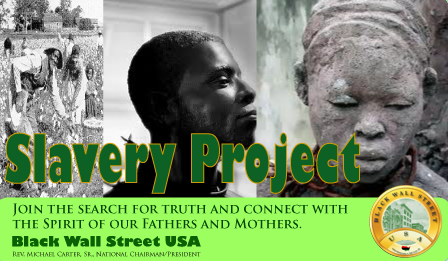
Alabama
Alaska
Arizona
Arkansas
California
Colorado
Connecticut
Delaware
Florida
Georgia
Hawaii
Idaho
Illinois
Indiana
Iowa
Kansas
Kentucky
Louisiana
Maine
Maryland
Massachusetts
Michigan
Minnesota
Mississippi
Missouri
Montana
Nebraska
Nevada
New Hampshire
New Jersey
New Mexico
New York
North Carolina
North Dakota
Ohio
Oklahoma
Oregon
Pennsylvania
Rhode Island
South Carolina
South Dakota
Tennessee
Texas
Utah
Vermont
Virginia
Washington
Washington D.C.
West Virginia
Wisconsin
Wyoming

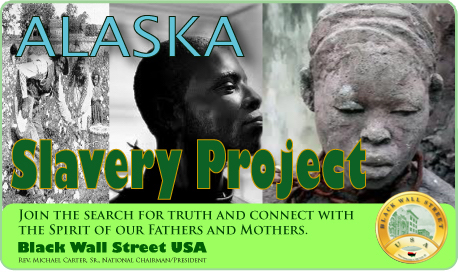
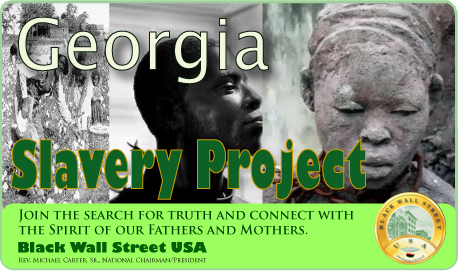

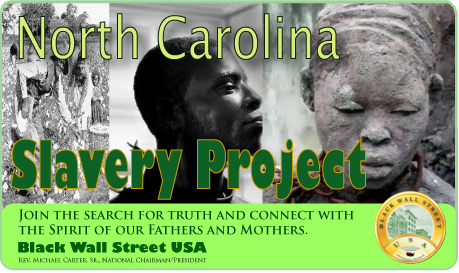
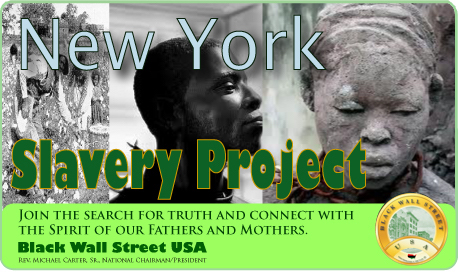

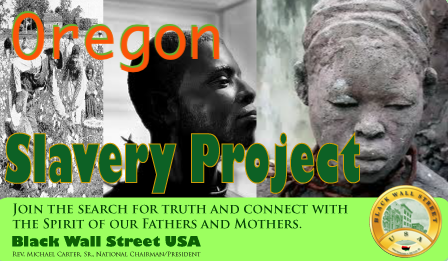

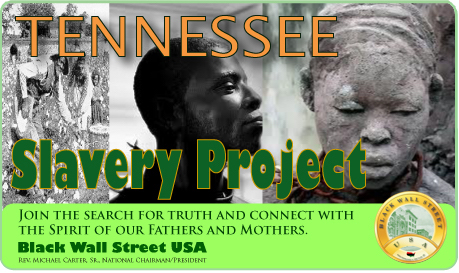
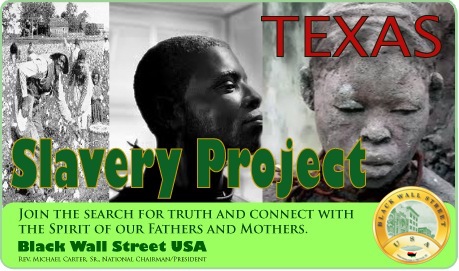
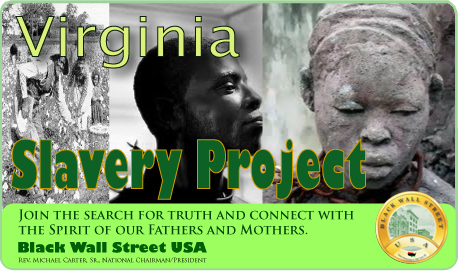


BlackWallStreet.org

Slave Records By State
See: Slave Records By State
Freedmen's Bureau Records
See: Freedmen's Bureau Online
American Slavery Records
See: American Slavery Records
American Slavery: Slave Narratives
See: Slave Narratives
American Slavery: Slave Owners
See: Slave Owners
American Slavery: Slave Records By County
See: Slave Records By County
American Slavery: Underground Railroad
See: American Slavery: Underground Railroad

